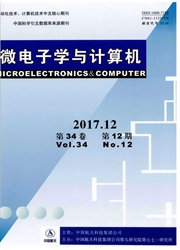

 中文摘要:
中文摘要:
基于一个听觉的模型,与最大的 Teager 精力零十字路口操作员(ZCMT ) 特征抽取途径被描述,然后适用于讲话和情感识别。三种实验被执行。第一种类型由孤立的词识别实验组成在中立(非感情) 讲话。结果证明 ZCMT 途径有效地与 Teager 精力操作员(TEO ) 相比在一般水准在 3.47% 改进识别精确性。因此, ZCMT 特征能为语音识别被看作一个噪音柔韧的特征。第二种类型由使用太原工业大学(TYUT ) 和柏林数据库由单语的情感识别实验组成。因为 ZCMT 途径的平均识别率是 82.19% ,结果显示 ZCMT 特征能以一个有效方法描绘讲话情感。第三种类型与三种语言由跨语言的实验组成。作为 1.45% 仅仅减少的 ZCMT 途径的精确性,结果显示 ZCMT 特征能以一个语言独立人士方法描绘情感。
 英文摘要:
英文摘要:
Based on an auditory model, the zero-crossings with maximal Teager energy operator (ZCMT) feature extraction approach was described, and then applied to speech and emotion recognition. Three kinds of experiments were carried out. The first kind consists of isolated word recognition experiments in neutral (non-emotional) speech. The results show that the ZCMT approach effectively improves the recognition accuracy by 3.47% in average compared with the Teager energy operator (TEO). Thus, ZCMT feature can be considered as a noise-robust feature for speech recognition. The second kind consists of mono-lingual emotion recognition experiments by using the Taiyuan University of Technology (TYUT) and the Berlin databases. As the average recognition rate of ZCMT approach is 82.19%, the results indicate that the ZCMT features can characterize speech emotions in an effective way. The third kind consists of cross-lingual experiments with three languages. As the accuracy of ZCMT approach only reduced by 1.45%, the results indicate that the ZCMT features can characterize emotions in a language independent way.
 同期刊论文项目
同期刊论文项目
 同项目期刊论文
同项目期刊论文
 Parameter optimization and application of support vector machine based on parallel artificial fish s
Parameter optimization and application of support vector machine based on parallel artificial fish s Study for classification of emotional speech by using optimized frame zero crossing with peak amplit
Study for classification of emotional speech by using optimized frame zero crossing with peak amplit A robust feature extraction approach based on an auditory model for classification of speech and exp
A robust feature extraction approach based on an auditory model for classification of speech and exp 期刊信息
期刊信息
